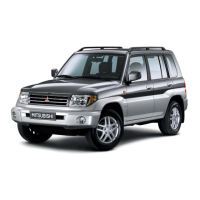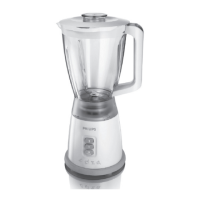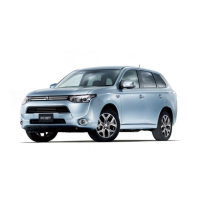Chapter 8 Clutch and driveline 8-3
2.1 Exploded views of the clutch components
Cable-actuated models (top)
1 Bolt
2 Clutch plate pressure assembly
3 Clutch disc
4 Spring clip
5 Release bearing
6 Spring pin
7 Clutch controllever
8 Return spring
9 Release fork
10
Return spring
11 Felt packing
Hydraulically actuated models (bottom)
12 Bolt
13 Clutch pressure plate assembly
14 Clutch disc
15 Spring clip
16
Release
bearing
17 Bolt
18 Release cylinder
19 Boot
20 Release fork
2 1 Ballstud
22 Bearing retainer
3.10 The clutch disc
1 Lining - this will wear 3 Rivets - These secure the
down in use lining and will damage the
2 Marks - “Flywheel Side” pressure plate if allowed
or something similar to contact it
2 Remove the release cylinder (hydraulically actuated models) without
disconnecting the hydraulic line (see Section 8). Support the cylinder out
of the way by a piece of wire from the undercarriage.
3 Referring to Chapter 7 Part A, remove the transmission from the ve-
hicle. Support the engine while the transmission is out. Preferably, an en-
gine hoist should be used to support it from above. However, if a jack is
used underneath the engine, make sure a piece of wood is used between
the jack and oil pan to spread the load. Caution:
The pickup for the oil
pumpis very close to the bottom of the oilpan. If thepan is bentordistorted
in any way, engine oil starvation could occur.
4 To support the clutch disc during removal, install a clutch alignment
tool through the clutch disc hub.
5 Carefully inspect the flywheel and pressure plate for indexing marks.
The marks are usually an X, an 0 or awhite letter. If they cannot be found,
apply marks yourself so the pressure plate and the flywheel will be in the
same alignment during installation.
- 6 Turning each bolt only l/2-turn at a time, slowly loosen the pressure
plate-to-flywheel bolts. Work in a diagonal pattern and loosen each bolt a
little at a time until all spring pressure is relieved. Then hold the pressure
plate securely and completely remove the bolts, followed by the pressure
plate and clutch disc.
Inspection
7 Ordinarily, when a problem occurs in the clutch, it can be attributed to
wear of the clutch disc assembly. However, all components should be in-
spected at this time.
8 Inspect the flywheel for cracks, heat checking, grooves or other signs
of obvious defects. If the imperfections are slight, a machine shop can ma-
chine the surface flat and smooth, which is highly recommended regard-
less of the surface appearance. Refer to Chapter 2 for the flywheel
removal and installation procedure.
9 Inspect the pilot bearing (if equipped) (Section 6).
10 Inspect the lining on the clutch disc. There should be at least 1 mm of
lining above the rivet heads. Check for loose rivets, warpage, cracks, dis-
torted springs or damper bushings and other obvious damage (see illus-
tration). As mentioned above, ordinarily the clutch disc is replaced as a
matter of course, so if in doubt about the condition, replace it with a new
one.
11 Ordinarily, the release bearing is also replaced along with the clutch
disc (see Section 4).

